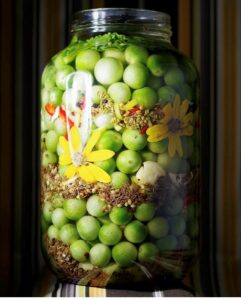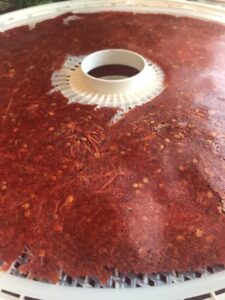As last week’s morning fog can attest, Autumn has arrived in the Pacific Northwest. It brings to mind garden clean up, and one of my favorite songs by Yo La Tengo, Autumn Sweater.

As the weather cools and Summer crops fade, it’s tempting to let tomatoes stay on the vine, but if you’re going to be canning them you might want to reconsider. Tomatoes from dead or frost-killed vines in your garden are unsafe to can. (Yes, it’s true!) Why? The pH in tomatoes attached to dead or frost killed vines change to a less acidic level that is unsafe for safe canning directions. Despair not, they’re still great for drying, pickling, freezing, and eating fresh!

The National Center for Home Food Preservation has some great ideas on uses for green tomatoes here. (Pickled green tomatoes are going into this year’s holiday gift baskets as part of a Bloody Mary kit.)
Clackamas County Master Food Preservers utilize every bit of their tomatoes by dehydrating the skins left over after peeling tomatoes for canning. It’s an easy, no-waste method of Extending the Harvest. Dehydrated tomato skins, leftover pulp, and seeds become delicious tomato powder. Powder can be used in soup, sauce base, or paste, and is a perfect backpacking/camping food. Bonus, it doesn’t require jars. (Jar and lid shortage is a real thing!)

To make: Blend cooked skins, or whole cooked tomatoes into a sauce and spread on lightly oiled leather trays. Caution! Let the sauce cool before blending in a blender! Dry at 135°F for approximately 10 hours. After about six hours, the tomato leather should be dry enough to remove from the leather trays. Flip onto mesh drying trays and finish dehydrating until brittle.

